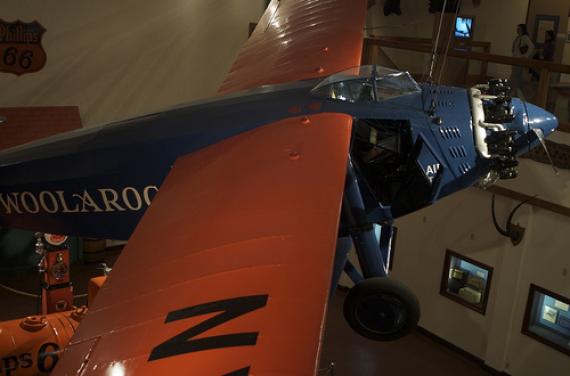Morbid Monday: Fifteen Planes Enter, Two Planes Leave - The Deadly Dole Air Race
.jpg)
They did it for money, fame, and glory. What they got was death. As it turns out, 1920s aviation might be the real “most dangerous game.”
In pursuit of $35,000 in prize money and some measure of fame, fifteen single engine airplanes registered for the opportunity to be the first to fly from Oakland to Hawaii, just two months after Lindbergh’s sucessful flight from New York to Paris. Eleven qualified. Then the crashing began.
Before the race even started, it was marked by disaster. Two men - Covell and Waggener - set off for the race from San Diego for Oakland. They were ready to win fame, money, and to make history (sort of, two different planes had actually already made the trip before) but they didn’t get far. Fifteen minutes after taking off, they flew through a heavy fog and crashed into a cliff. Their flaming airplane smashed into the beach below. They hadn’t even made it out of San Diego.
In a second pre-race disaster, pilot Captain Aurthur V. Rogers took his plane for a simple test flight and, as he prepared to land, and with little apparent reason, he plunged 125 feet to his death as his wife and infant daughter watched. Yet another Dole plane crashed on its way to the race, falling 100 feet into the water, though both pilor and navigator survived.
The Dole race had claimed the lives of three men, and it hadn’t even started.
Of course, to fly a plane in 1927 required a certain flavor of crazy. The motley assortment of planes - including a monoplane, a two wing plane, and a weird three wing plane - that assembled for this race were more a testiment to the derring-do of the flight crews than to cutting edge technology. Planes had no real safety gear, and a lack of navigational equipment that would scare the crap out of any reasonable pilot today.
Despite the fact that some of the luster of the race was diminished by the unexpected success of two Army pilots successfully flying from Oakland to Oahu in June, excitement about the race was still high. The crashes had only served to pique the public’s interest and a crowd of nearly 100,000 gathered to watch the planes take off.
On the morning of August 16, the eight remaining planes queued up for their opportunity. They drew lots for flight order and took off one by one. As people cheered, things went bad in a hurry.
One plane, the El Encanto, simply shot off the edge of the runway, and tumbled over her wing. Another the Pabco Flyer got into the air… until she didn’t, landing some 7000 feet away in a marsh. Three more planes took off only to promptly return with technical difficulties.
Of the fifteen planes that had entered the race, only four planes, the Golden Eagle, Aloha, Woolaroc, and Miss Doran, were actually able to attempt the journey. The results of the ill fated race would soon be known.
26 and 28 hours later the last two planes to take off - the Aloha and Woolaroc - were the first to land in Hawaii. In fact, they were the only two planes to land. The other two competitors, the Golden Eagle and Miss Doran, and their crews were never heard from again, lost somewhere over the Pacific.
This brought the death total for the race up to eight: two pilots, two navigators, and a 22 year old would-be aviatrix named Mildred who had choosen to ride along in her namesake, the Miss Doran. But even now, as the men who actually flew and survived the race celebrated, there was more death to come.
In a final bit of tragedy, three days later the Dallas Spirit - one of the planes that had returned with technical difficulties - took off to assist in the search for the missing planes, and then disappeared itself.
Ten people had now died. The Dole race was over, four men were winners, and nearly half of all the contestents who had qualified for the race were dead.
More on the ill-fated race:
The San Francisco Call: “Death Dogged the Dolebirds”
Honolulu Star-Bulletin: “The Dole Derby”
Woolaroc, winner of the ill-fated race, can be visited in Oklahoma.
LAST PLANE STANDING
 |
WOOLAROC The Woolaroc airplane is the centerpiece in an oil baron’s eclectic collection which includes works by Frederic Remington, assorted taxidermy, and Western art.
|
Join us each Monday on Twitter and follow our #morbidmonday hashtag, for new odd and macabre themes each week: Atlas Obscura on Twitter
PREVIOUSLY:
Morbid Monday: Ghost Writing: The Story of Pearl & Patience
Morbid Monday: Phineas Gage: Jerk
Morbid Monday: Gassed
Morbid Monday: Deadly Trains
Morbid Monday: Chung Ling Soo & the Bullet Trick That Went Horribly Wrong




Follow us on Twitter to get the latest on the world's hidden wonders.
Like us on Facebook to get the latest on the world's hidden wonders.
Follow us on Twitter Like us on Facebook